48 A.D. Revivals During Paul’s 1st Missionary Journey

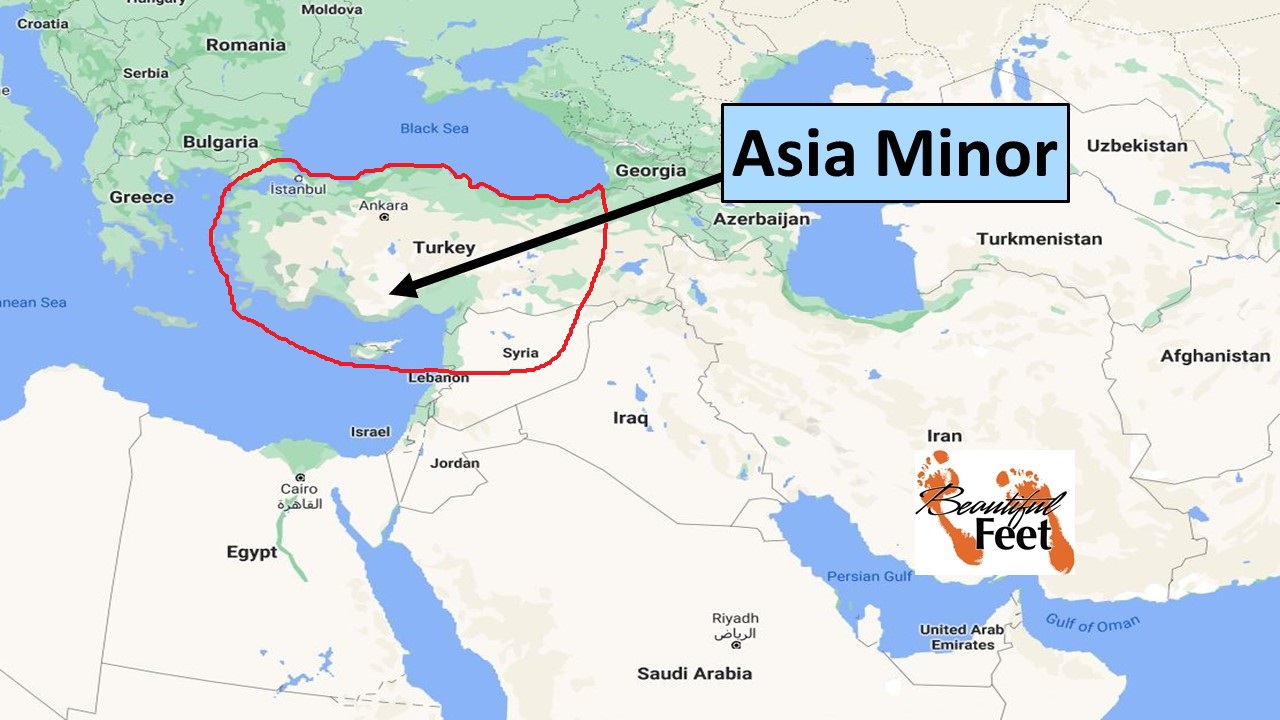
This revival account is recorded in Acts 13:1-52; 14:1-28.
Introduction
The 42 A.D. Revival at Antioch had resulted in a “large number” of Jews and Gentiles who turned to the Lord (Acts 11:21). The revival experienced a second wave when Barnabas arrived from Jerusalem, and the result was that “many people” were again added to the Lord (Acts 11:24). These “large crowds of people” were then solidified in their faith through the extensive teaching of prophets and teachers, like Barnabas, Saul, Simeon, Lucius, and Manaen (Acts 13:1).
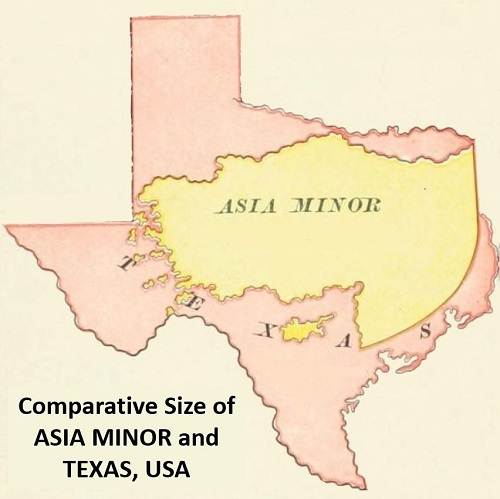
Leader Prayer Gathering Elevates Antioch to Become a Sending Church
When the prophets and teachers of the Antioch church (Acts 13:1-2) were spending time in worship, coupled with fasting, a prophetic utterance was delivered by one of the men, which was the Holy Spirit speaking to the group, saying:
Appoint Barnabas and Saul for the special work to which I have called them (Acts 13:2b).
Having received this message from God, the five men continued with more prayer and fasting. They then laid their hands on Barnabas and Saul, to commit them into the Lord’s hand for the work to which He had called them, and then sent them off on their mission to Asia Minor (Acts 13:3).
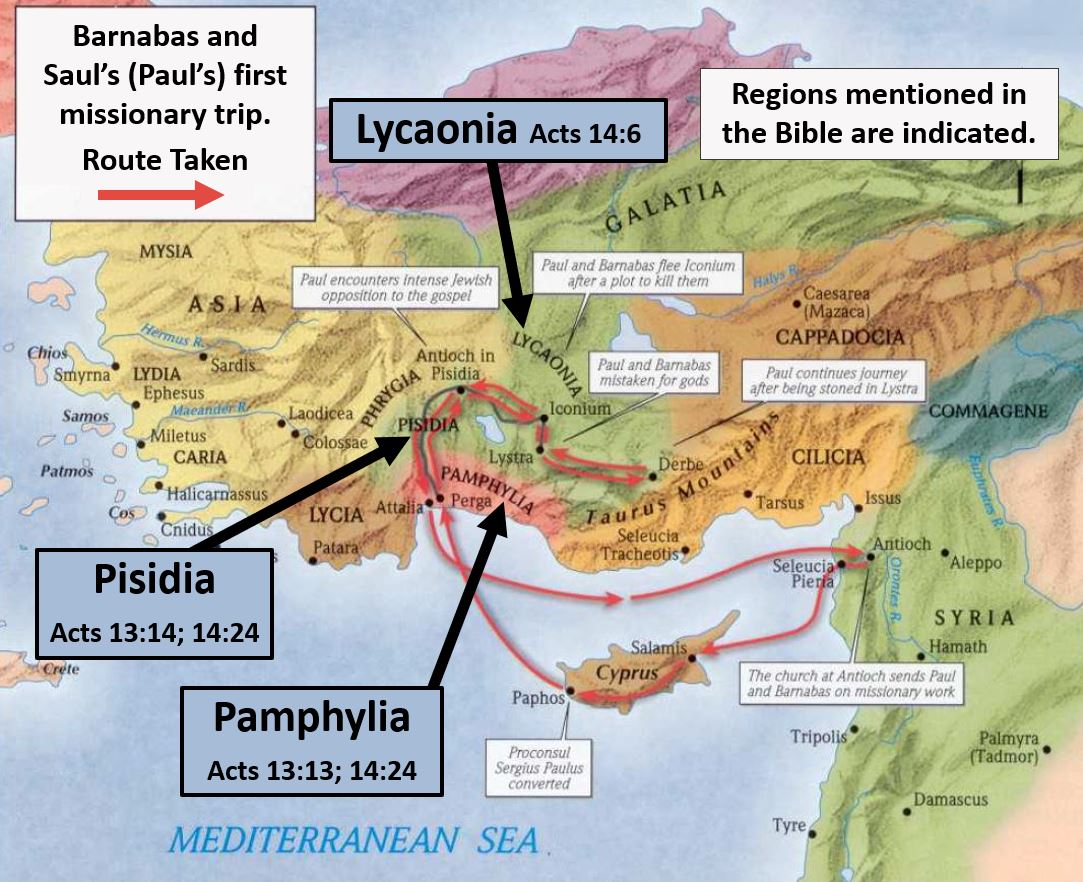
First Missionary Journey of Barnabas and Saul (Paul)
Sequence of cities visited during their travels:
► Seleucia: Mediterranean seacoast city, 16 miles away from Antioch (Acts 13:4)
Island of Cyprus
► Salamis: It was in this town that they preached in the synagogue (Acts 13:5).
► Town after Town: The team stopped in town after town, preaching across the island till they reached Paphos (Acts 13:6).
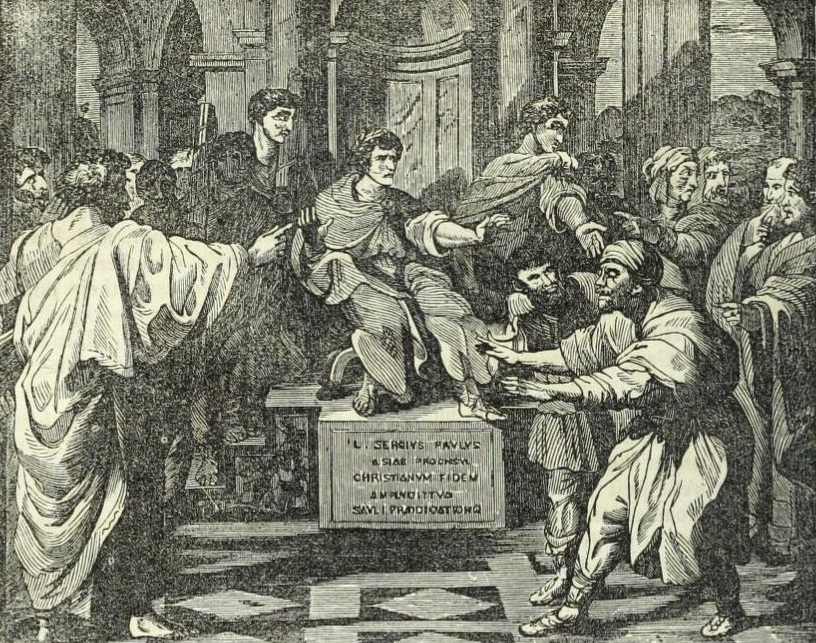
Elymas the Sorcerer (Acts 13:6-12) by Raphael
► Paphos: At this town they had an encounter with a Jewish sorcerer, Elymas, who was attempting to stop Barnabas and Saul from sharing the Gospel with the governor of the island, Sergius Paulus. When Saul, now having taken the Roman name, Paul, uttered the judgment of God upon Elymas, he was subsequently struck blind. Sergius Paulus, the governor, who was described as being an intelligent man, seeing what happened, became a believer (Acts 13:6-12).
We only have one named convert on the island of Cyprus, and that was Sergius Paulus (Acts 13:12). Even though the Bible only records one, we can safely assume that there were many more.
Departure from Cyprus to the Area of Pamphylia
► Perga: After the team finished their ministry on the island of Cyprus, they boarded a ship and left for the region known as Pamphylia, and the “port town of Perga” (Acts 13:13).
Area of Pisidia
► Antioch of Pisidia: Continuing inland, they arrived in the town of Antioch in the region of Pisidia. This was a different town with the same name as Antioch in Syria, from where they initially departed on this journey (Acts 13:14).
Evidently on the first Sabbath after arriving in Antioch of Pisidia, they were invited to share in the synagogue (Acts 13:14-15).
Saul by this time was being referred to as Paul, and being the “chief speaker” (Acts 14:12), he stood and gave an address, detailing the history of the nation of Israel, leading up to and including the Gospel message (Acts 13:16-41).
Paul’s address made quite a stir, and they invited him to share again the following Sabbath (Acts 13:42-43).
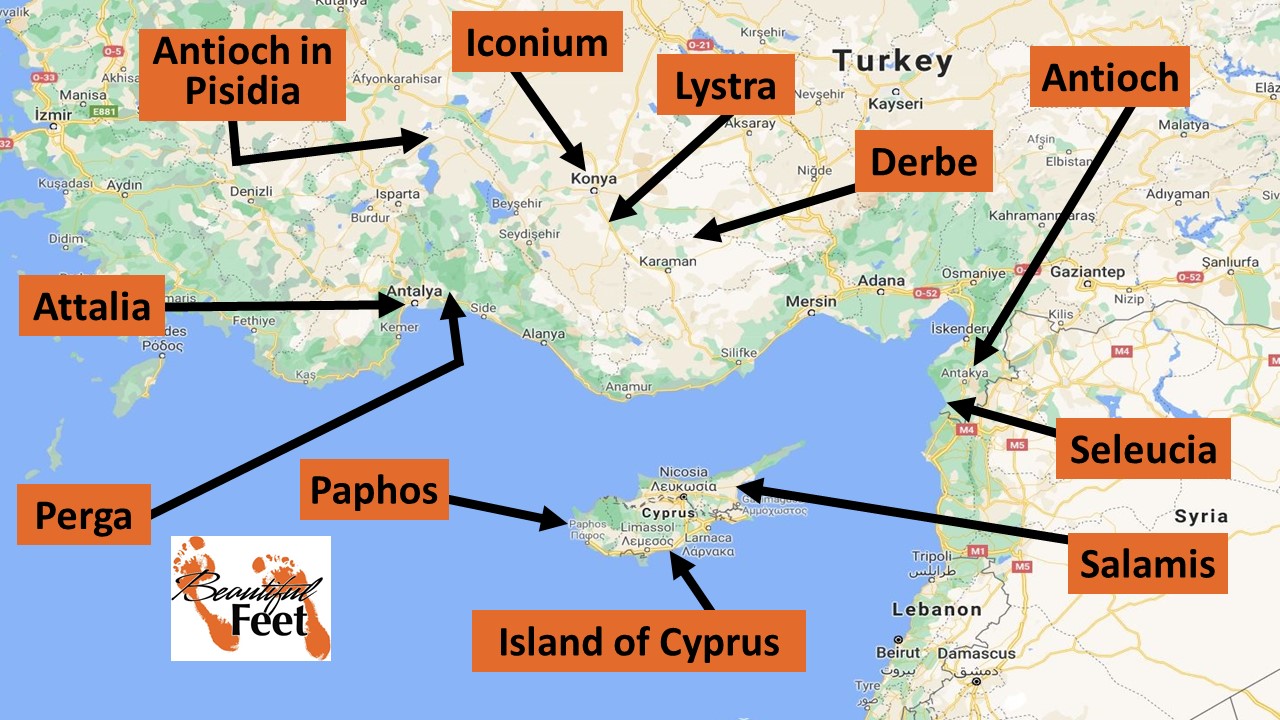
Locations mentioned in this revival account
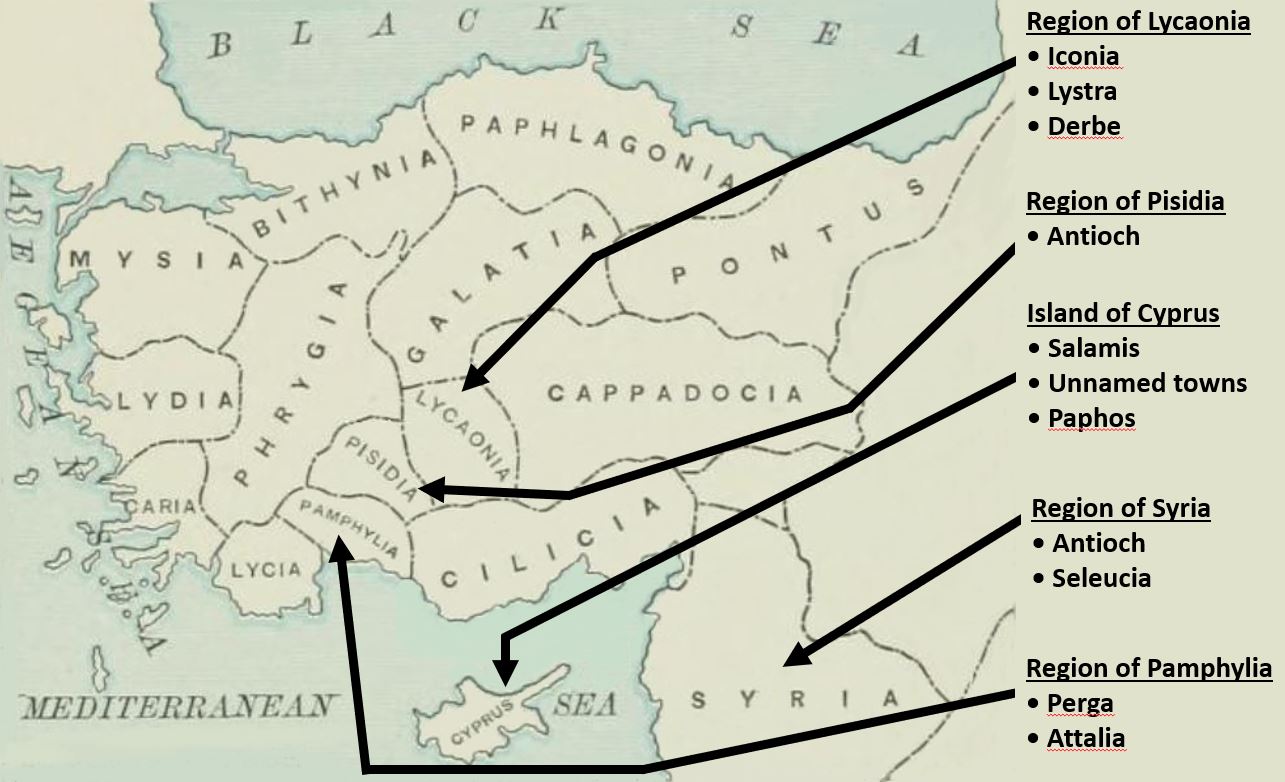
Roman Provinces in Asia Minor, and the cities visited by Barnabas and Paul in those regions
On the following Sabbath “almost the entire city turned out to hear them preach the word of the Lord” (Acts 13:44), which resulted in raising the jealousy of the Jewish leaders (Acts 13:45).
The opposition didn’t become a major problem, because the Gentile believers picked up the message and carried it throughout the region (Acts 13:46-49).
Iconium: Having been driven out of Antioch by Jewish instigators, Paul and Barnabas moved on to their next town—Iconium (Acts 13:50-51).
Acts 14:1-7, begins with the words, “The same thing happened in Iconium.” The pattern of events that occurred in Antioch of Pisidia occurred in Iconium, with the exceptional addition of:
But the apostles stayed there a long time, preaching boldly… And the Lord proved their message was true by giving them power to do miraculous signs and wonders (Acts 14:3).
Miracles Do Not Always Move Hearts
There are always miracles that occur, even today–undeniable ones–yet hard-hearted people, as well as those from the secular culture that reject the possibility of there even being a God, will struggle to come up with a scientific explanation for the unexplainable. This is what occurred in Iconium and it led to Paul and his team fleeing for their lives.
Note also that the religious leaders in Jesus’ day, as well as those in Jerusalem after Jesus’ resurrection, could not deny the miracles that were being performed. What we find is that most of them still refused to allow those miracles to move their hearts (Acts 4:16).
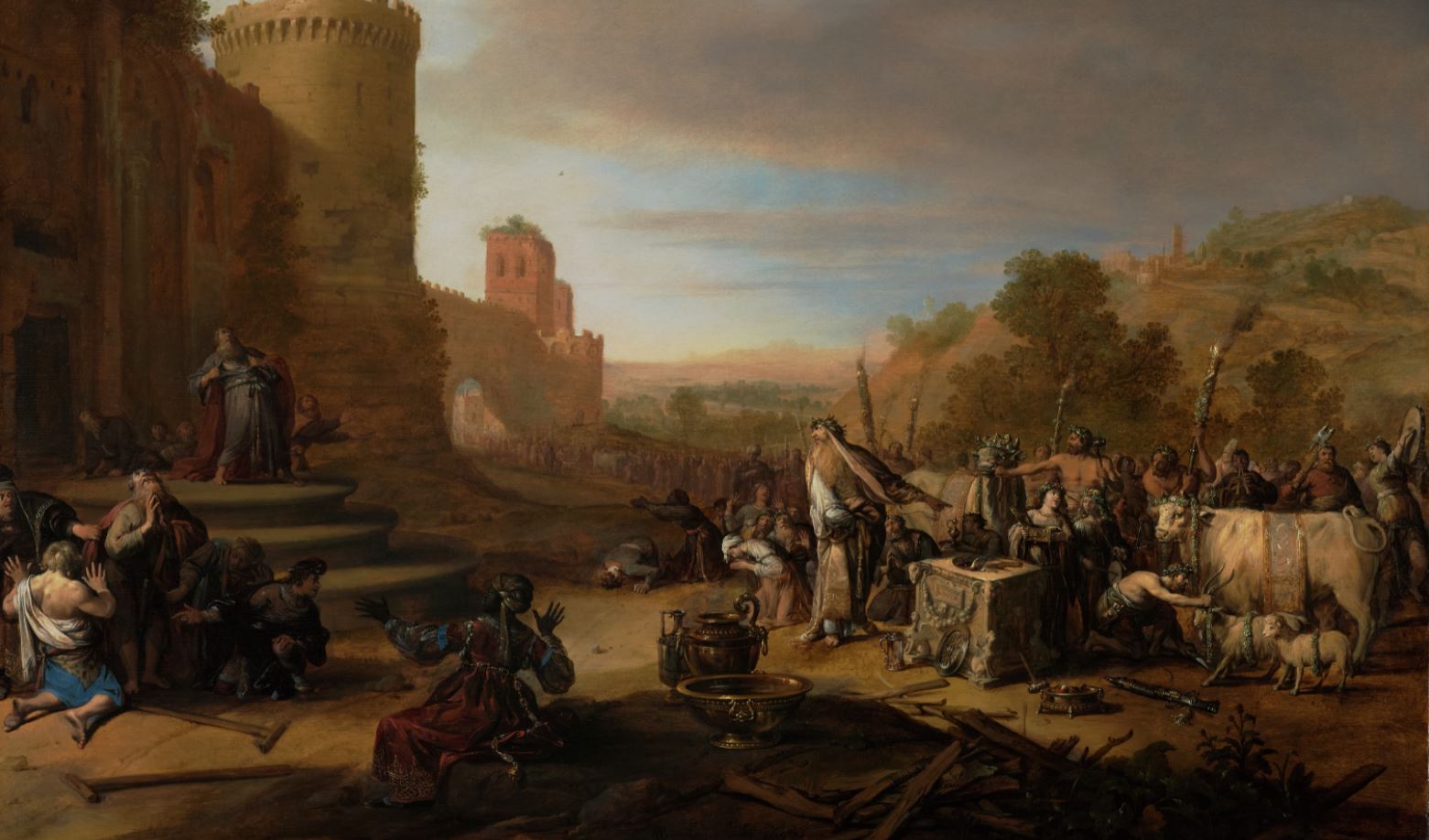
Lystra Sacrifice. Paul on left tearing his clothing (Acts 14:14) Bartholomeus Breenbergh 1637
Region of Lycaonia
Lystra: After departing from Iconium, Paul and his team arrived in Lystra, where they prayed for a man who was crippled. This was a man who had never walked, and he was instantaneously healed (Acts 14:8-10).
The pattern in Paul’s ministry was that he would preach, and then miracles were the confirmation that what he was preaching and teaching was true. Paul specifically said that
“in this way I have fully presented the Good News of Christ…” (Romans 15:19).
This is what we see happened in Lystra, and with the healing miracle being so undeniable, the townspeople assumed Paul and Barnabas were gods and made plans to offer sacrifices to them (Acts 14:11-13).
Upon learning what was about to happen, Barnabas and Paul rushed to the scene to stop them, and were barely able to do so (Acts 14:14-18).
Stoning of Paul
When antagonist Jews from Antioch of Pisidia and Iconium arrived in Lystra, they raised a mob in opposition to Paul and stoned him. Imagine: in one moment they were ready to offer sacrifices to Paul, perceiving him to be a god, then a short time later they stoned him (Acts 14:19-20).
Revivals are very volatile, as the powers of God, as well as Satan’s, are prominently displayed, while the intense battle rages for the reviving of the church and the salvation of souls.
Derbe: The day after Paul’s stoning the team left Lystra for Derbe, where they were successful in “making many disciples” (Acts 14:21).
Backtracking through Previously Visited Cities
Attalia: After the team’s ministry in Derbe, they backtracked through all the towns they had originally visited, making their way to the coast where they preached in the town they had previously never visited, Attalia. After that, they boarded a ship to return “to Antioch of Syria where their journey had begun” (Acts 14:22-28).
Revival Power Accompanied the Preaching of the Gospel
This missionary journey wasn’t merely evangelistic. It was strategically used to start churches everywhere the ministry team visited, and they even installed elders over those churches to care for the new believers. This strategy was to ensure that the Gospel would continue to spread throughout the region (Acts 14:23).
Note Paul’s philosophy of ministry as he traveled spreading the Gospel:
My ambition has always been to preach the Good News where the name of Christ has never been heard, rather than where a church has already been started by someone else (Romans 15:20).
Return to List of Revival Stories
Chet & Phyllis Swearingen:
Office: (260) 920-8248
romans1015@outlook.com
Beautiful Feet
P.O. Box 915
Auburn, IN 46706

